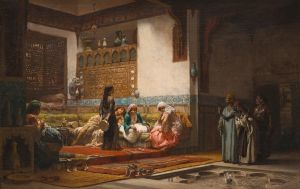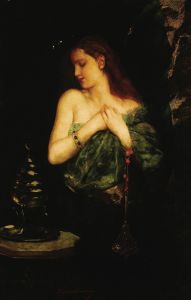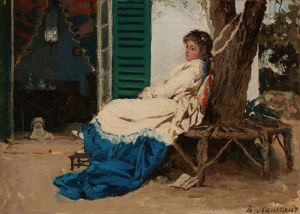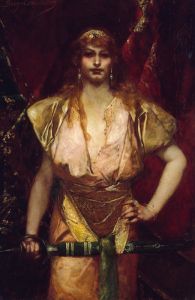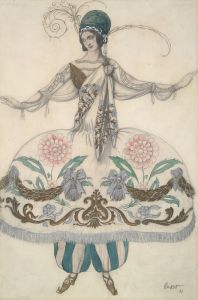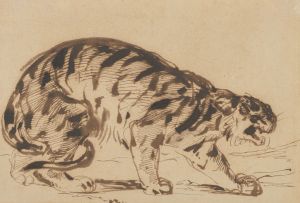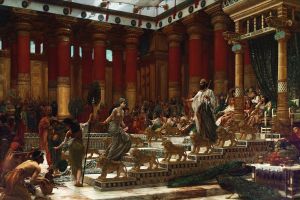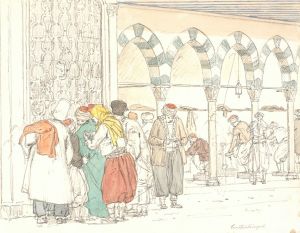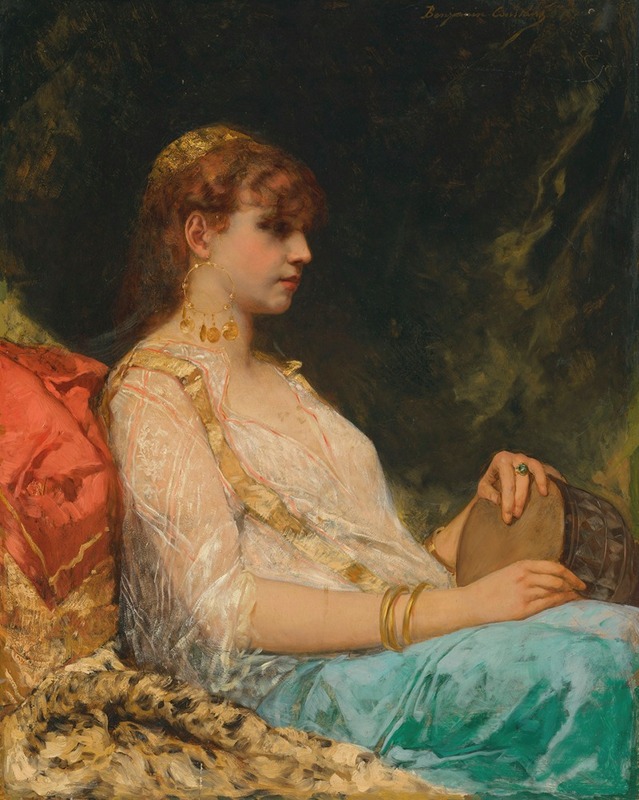
L’Orientale au Tambour
A hand-painted replica of Jean-Joseph-Benjamin Constant’s masterpiece L’Orientale au Tambour, meticulously crafted by professional artists to capture the true essence of the original. Each piece is created with museum-quality canvas and rare mineral pigments, carefully painted by experienced artists with delicate brushstrokes and rich, layered colors to perfectly recreate the texture of the original artwork. Unlike machine-printed reproductions, this hand-painted version brings the painting to life, infused with the artist’s emotions and skill in every stroke. Whether for personal collection or home decoration, it instantly elevates the artistic atmosphere of any space.
Jean-Joseph-Benjamin Constant was a French painter and etcher, known for his Orientalist works. Born in Paris in 1845, Constant studied at the École des Beaux-Arts under Alexandre Cabanel. He became known for his vivid depictions of scenes inspired by his travels to the Middle East and North Africa, which were popular themes in 19th-century European art. His works often featured rich colors and intricate details, capturing the exoticism and allure of the Orient as perceived by Western audiences of the time.
One of Constant's notable works is "L’Orientale au Tambour." This painting exemplifies his fascination with Orientalist themes, showcasing a woman playing a tambourine. The subject is depicted with a sense of grace and elegance, adorned in traditional attire that reflects the artist's attention to detail and his interest in the cultural elements of the regions he visited. The painting is characterized by its vibrant use of color and the intricate patterns of the woman's clothing, which are typical of Constant's style.
Constant's work, including "L’Orientale au Tambour," is part of the broader Orientalist movement in art, which sought to depict the cultures and landscapes of the Middle East and North Africa through a Western lens. This movement was fueled by European colonial interests and a fascination with the so-called "exotic" East. Artists like Constant played a significant role in shaping Western perceptions of the Orient, often romanticizing and idealizing the subjects they portrayed.
"L’Orientale au Tambour" reflects the aesthetic and thematic elements common in Orientalist art. The painting captures a moment of musical performance, a theme that was popular among Orientalist artists who sought to convey the sensory experiences of the East. The tambourine, a musical instrument with historical significance in many Eastern cultures, serves as a focal point in the composition, drawing attention to the cultural exchange and artistic inspiration that characterized Constant's work.
Throughout his career, Constant received numerous accolades for his contributions to art. He exhibited regularly at the Paris Salon, where his works were well-received by critics and the public alike. His ability to blend realism with a romanticized vision of the East earned him a prominent place among his contemporaries. In addition to his paintings, Constant also produced etchings and illustrations, further showcasing his versatility as an artist.
Despite the popularity of Orientalist art during Constant's lifetime, the genre has since been critiqued for its portrayal of Eastern cultures through a colonialist perspective. Modern scholars and critics often examine works like "L’Orientale au Tambour" within the context of cultural appropriation and the power dynamics inherent in the Western depiction of the East. Nonetheless, Constant's work remains an important part of art history, offering insight into the 19th-century European fascination with the Orient and the artistic trends of the time.
Jean-Joseph-Benjamin Constant continued to produce art until his death in 1902. His legacy is preserved in museums and collections worldwide, where his paintings continue to be studied and appreciated for their artistic merit and historical significance. "L’Orientale au Tambour" stands as a testament to Constant's skill as a painter and his enduring influence on the Orientalist movement.





